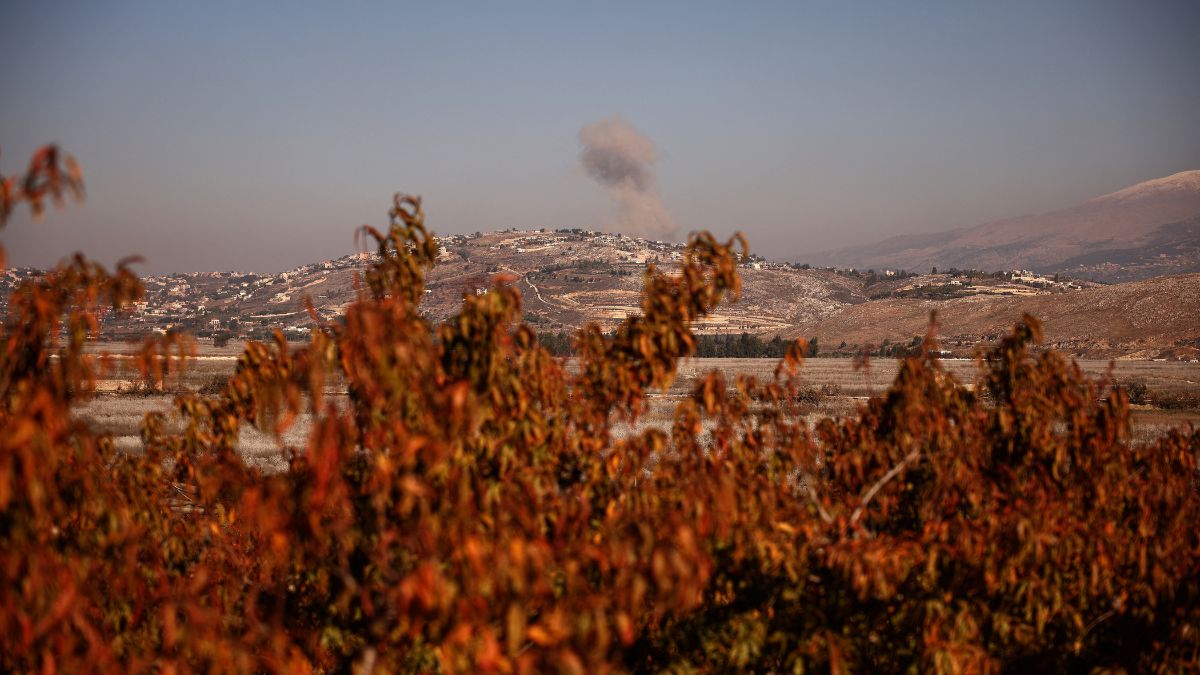The fragile ceasefire between Israel and Hezbollah, brokered less than a week ago, is facing mounting challenges, with escalating violence and mutual accusations of violations threatening to unravel the agreement.
The truce, mediated by the United States and France, was seen as a critical step toward halting hostilities after a devastating conflict.
However, events over the past few days indicate that its success is far from assured.
How ceasefire has been violated
Monday marked a significant escalation in tensions as Israeli strikes targeted Hezbollah positions in southern Lebanon. At least nine people were killed and three injured in the towns of Talousa and Haris, as reported by the Lebanese Health Ministry.
Earlier in the day, two additional deaths were recorded, including a State Security officer killed by an Israeli rocket in Nabatieh. This brought the day’s death toll to 11, reported Reuters.
The Israeli military stated it had struck “dozens of Hezbollah targets,” framing the operation as necessary to counter ongoing provocations.
In response, Hezbollah launched missiles at an Israeli military position in the disputed Shebaa Farms area, describing the action as a “defensive warning strike.” This marked the group’s first officially announced operation since the truce came into effect last Wednesday.
Hezbollah justified its actions by accusing Israel of repeated ceasefire violations, including air raids, drone incursions, and shooting incidents.
“Appeals by the relevant authorities to stop these violations did not succeed,” the group said in a statement. Israeli Prime Minister Benjamin Netanyahu condemned the missile attack, vowing a “strong” response.
The most recent activity happened when Israel on Tuesday carried out fresh airstrikes in Lebanon. The IDF said that the airstrike targeted a “terrorist cell” in the Bekaa area of Lebanon.
A blame-game between Israel & Lebanon
The ceasefire agreement, aimed at halting a war that claimed nearly 4,000 lives and devastated large parts of Lebanon, includes specific commitments from both sides.
Israel is required to cease offensive operations in Lebanon, while Lebanon is obligated to prevent armed groups, including Hezbollah, from carrying out attacks on Israeli soil. Despite these terms, mutual accusations have proliferated:
Israeli allegations
Israeli Foreign Minister Gideon Saar accused Hezbollah of moving weapons south of the Litani River in violation of the ceasefire. “Israel is committed to the successful implementation of the ceasefire, but we will not accept a return to the situation as it stood on October 6, 2023,” Saar said.
Finance Minister Bezalel Smotrich urged a “powerful blow” against Hezbollah, calling its recent actions a “big mistake.”
Lebanese claims
Lebanese Speaker of Parliament Nabih Berri, a key negotiator of the truce, stated that Israel had committed at least 54 violations since the agreement took effect.
These included airstrikes, drone overflights, and the destruction of homes near the border. “All these activities represent flagrant violations of the ceasefire agreement,” Berri said in a statement.
Israeli artillery fired on the southern Lebanese town of Beit Lif and directed heavy machine gun fire at Yaroun, according to Lebanon’s state news agency NNA. Although no injuries were reported in these specific incidents, the broader pattern of aggression has alarmed officials on both sides.
Why this truce is important
The current truce comes after months of escalating hostilities. Israel launched an all-out military campaign against Hezbollah on September 23, 2023, citing the group’s ongoing attacks on northern Israel as a pretext.
The conflict saw Hezbollah intensify its rocket fire on Israeli territory while Israel carried out widespread airstrikes targeting Hezbollah strongholds in southern and eastern Lebanon, as well as the Beirut suburb of Dahiyeh.
The war resulted in the assassination of several top Hezbollah leaders and the destruction of thousands of buildings and homes in Lebanon. Despite these losses, Hezbollah claimed it inflicted heavy casualties on Israeli forces and continued its missile attacks.
The ceasefire, signed under international pressure, requires Israel to withdraw from Lebanese territory within 60 days and for Hezbollah to move north of the Litani River. During this period, the Lebanese army is tasked with deploying to southern Lebanon to ensure that it is the sole armed force in the area.
How West Asia is dealing with violence
The violence in Lebanon is unfolding against the backdrop of other crises in the region:
Gaza conflict: In Gaza, the Hamas-led health authority reported over 44,466 deaths and 105,358 injuries since Israel’s military offensive began following Hamas’s surprise attack on October 7, 2023 .
Syria’s instability: In Syria, airstrikes pounded the rebel-held Idlib region, killing 18 people and injuring 35, according to the White Helmets civil defence group. Meanwhile, Iranian-backed militias reportedly crossed into eastern Syria to bolster forces loyal to President Bashar al-Assad amid an Islamist insurgency.
US officials have sought to stabilise the Lebanon-Israel truce. State Department spokesperson Matthew Miller stressed the importance of addressing violations through established mechanisms.
“Broadly speaking, [the ceasefire] has been successful in stopping the fighting and getting us on a path where we are not seeing the daily loss of life that we had seen for two months prior,” he noted.
Also Read | How Israel-Hezbollah ceasefire deal is a fragile peace
However, reports of Israeli forces using the truce to advance into new neighborhoods in Lebanese towns have fuelled scepticism about the agreement’s durability.
The truce has temporarily reduced the scale of violence, but whether it can lead to a lasting peace remains uncertain, leaving many to question: will the Lebanon ceasefire hold?
With inputs from agencies


)

)
)
)
)
)
)
)
)



